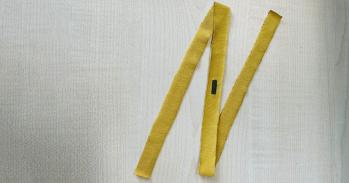
Researchers have identified a material that behaves as a conductor and an insulator at the same time, challenging current understanding of how materials behave, and pointing to a new type of insulating state.
Researchers have identified a material that behaves as a conductor and an insulator at the same time, challenging current understanding of how materials behave, and pointing to a new type of insulating state.
The discovery of dual metal-insulator behaviour in a single material has the potential to overturn decades of conventional wisdom regarding the fundamental dichotomy between metals and insulators
Suchitra Sebastian
A new study has discovered mysterious behaviour of a material that acts like an insulator in certain measurements, but simultaneously acts like a conductor in others. In an insulator, electrons are largely stuck in one place, while in a conductor, the electrons flow freely. The results, published today (2 July) in the journal Science, challenge current understanding of how materials behave.
Conductors, such as metals, conduct electricity, while insulators, such as rubber or glass, prevent or block the flow of electricity. But by tracing the path that electrons follow as they move through a material, researchers led by the University of Cambridge found that it is possible for a single material to display dual metal-insulator properties at once – although at the very lowest temperatures, it completely disobeys the rules that govern conventional metals. While it’s not known exactly what’s causing this mysterious behaviour, one possibility is the existence of a potential third phase which is neither insulator nor conductor.
The duelling metal-insulator properties were observed throughout the interior of the material, called samarium hexaboride (SmB6). There are other recently-discovered materials which behave both as a conductor and an insulator, but they are structured like a sandwich, so the surface behaves differently from the bulk. But the new study found that in SmB6, the bulk itself can be both conductor and insulator simultaneously.
“The discovery of dual metal-insulator behaviour in a single material has the potential to overturn decades of conventional wisdom regarding the fundamental dichotomy between metals and insulators,” said Dr Suchitra Sebastian of the University’s Cavendish Laboratory, who led the research.
In order to learn more about SmB6 and various other materials, Sebastian and her colleagues traced the path that the electrons take as they move through the material: the geometrical surface traced by the orbits of the electrons leads to a construction which is known as a Fermi surface. In order to find the Fermi surface, the researchers used a technique based on measurements of quantum oscillations, which measure various properties of a material in the presence of a high magnetic field to get an accurate ‘fingerprint’ of the material. For quantum oscillations to be observed, the materials must be as close to pure as possible, so that there are minimal defects for the electrons to bump into. Key experiments for the research were conducted at the National High Magnetic Field Laboratory in Tallahassee, Florida.
SmB6 belongs to the class of materials called Kondo insulators, which are close to the border between insulating and conducting behaviour. Kondo insulators are part of a larger group of materials called heavy fermion materials, in which complex physics arises from an interplay of two types of electrons: highly localised ‘f’ electrons, and ‘d’ electrons, which have larger orbits. In the case of SmB6, correlations between these two types of electrons result in insulating behaviour.
“It’s a dichotomy,” said Sebastian. “The high electrical resistance of SmB6 reveals its insulating behaviour, but the Fermi surface we observed was that of a good metal.”
But the mystery didn’t end there. At the very lowest temperatures, approaching 0 degrees Kelvin (-273 Celsius), it became clear that the quantum oscillations for SmB6 are not characteristic of a conventional metal. In metals, the amplitude of quantum oscillations grows and then levels off as the temperature is lowered. Strangely, in the case of SmB6, the amplitude of quantum oscillations continues to grow dramatically as the temperature is lowered, violating the rules that govern conventional metals.
The researchers considered several reasons for this peculiar behaviour: it could be a novel phase, neither insulator nor conductor; it could be fluctuating back and forth between the two; or because SmB6 has a very small ‘gap’ between insulating and conducting behaviour, perhaps the electrons are capable of jumping that gap.
“The crossover region between two different phases – magnetic and non-magnetic, for example – is where the really interesting physics happens,” said Sebastian. “Because this material is close to the crossover region between insulator and conductor, we found it displays some really strange properties – we’re exploring the possibility that it’s a new quantum phase.”
Tim Murphy, the head of the National High Magnetic Field Laboratory’s DC Field Facility, where most of the research was conducted, said: “This work on SmB6 provides a vivid and exciting illustration of emergent physics resulting from MagLab researchers refining the quality of the materials they study and pushing the sample environment to the extremes of high magnetic fields and low temperatures.”
The Cambridge researchers were funded by the Royal Society, the Winton Programme for the Physics of Sustainability, the European Research Council and the Engineering and Physical Sciences Research Council (UK).

The text in this work is licensed under a Creative Commons Attribution 4.0 International License. For image use please see separate credits above.




